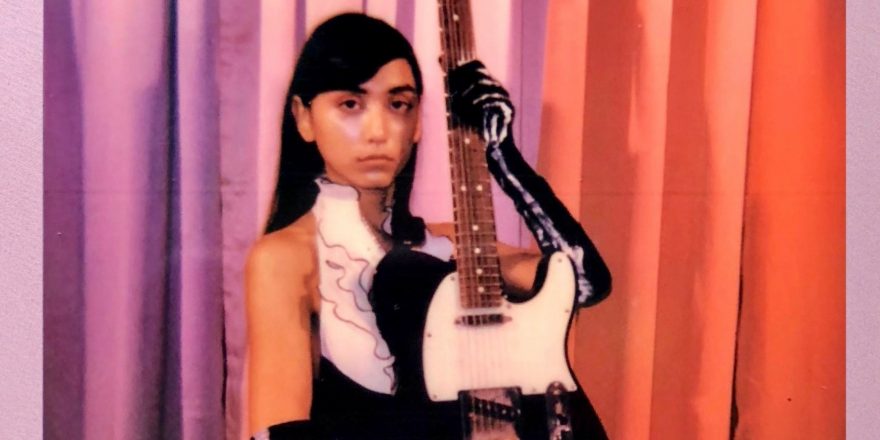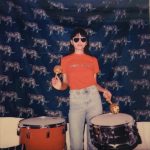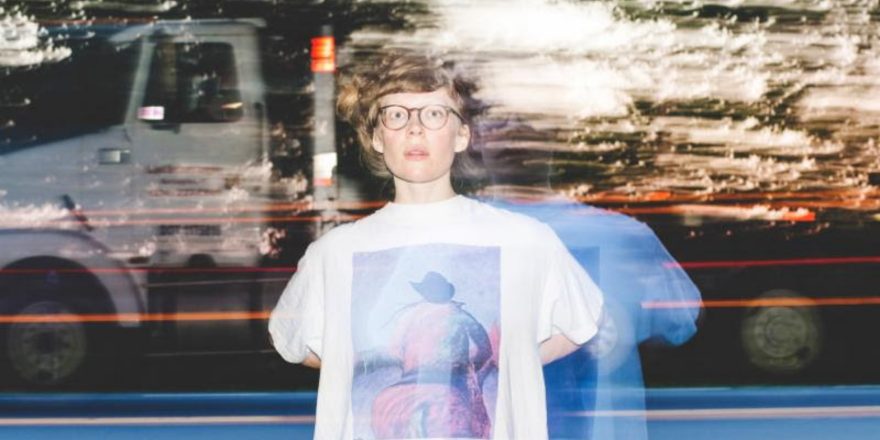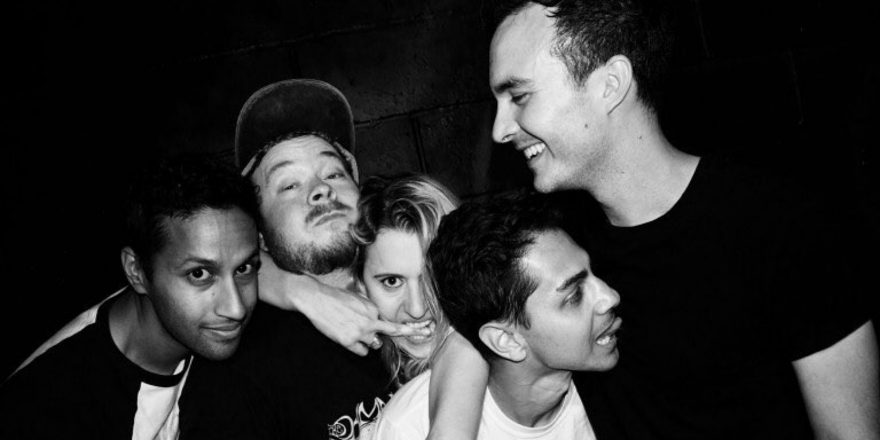Since I was twelve, my goal was to become a filmmaker. I realized cinema allowed me to recreate the visions and moments I’d only dreamt of. Like many young cinephiles growing up in the late 1990s and early 2000s, Blockbuster was like a second home. I became a fan of Hitchcock’s voyeuristic style because I’ve always felt myself to be a quiet observer. Seeing Fellini’s 8 ½ was a huge turning point for me—his eccentric, dream-like visuals projected on a screen felt very freeing. Also, I liked the concept of a film being made solely for artistic reasons and less for mainstream appeal.
I eventually went to college to study film production, where I worked on my thesis film, and directed a string of music videos. In 2013, I moved to D.C. and started a pop group called Esmond with a couple of friends. We took the Oblique Strategies method to making music—everyone switched roles and instruments from song to song in order to keep things fresh. We recorded some songs, made two music videos, and played only three live shows before the band dissolved. Shortly after, I directed a music video for the D.C. punk band, Foul Swoops. I was then asked to join the band, as a keyboard player. Becoming a member of such a spontaneous live group felt akin to joining a circus. While Esmond seemed more like an art experiment, Foul Swoops felt like a force to be reckoned with. It was while playing keyboards in Foul Swoops for two years that I realized I was just as in love with creating music as I was working with film. I liked the challenge of learning a new instrument and constructing magic out of thin air.
I enjoy marrying the mediums of film and music with my current project, Repo Fam. I am head storyteller; the driving force of the band. My non-traditional, minimalist approach is inspired by bands like Half Japanese, Beat Happening, and The Velvet Underground. I find comfort in taking a leap into the unknown. I’ve learned that exploring different visual forms, or trying different musical instruments can inspire new thoughts and form new patterns; it can rebuild your confidence, and open you up to new ways of thinking. There is no need to ever limit yourself. I take pleasure in the escape these two art forms offer me, so I allow for the noise and images to filter through my body. I embrace its existence.
“When we experience a film, we consciously prime ourselves for illusion. Putting aside will and intellect, we make way for it in our imagination. The sequence of pictures plays directly on our feelings. Music works in the same fashion; I would say that there is no art form that has so much in common with film as music. Both affect our emotions directly, not via the intellect. And film is mainly rhythm; it is inhalation and exhalation in continuous sequence. Ever since childhood, music has been my great source of recreation and stimulation, and I often experience a film or play musically. —Ingmar Bergman, Introduction of Four Screenplays
My film background allows me to hear things from a visual perspective. Music is abstractly visual; to compose a song is to essentially make a collage. Harmonies and rhythms meticulously pieced and shaped together can create something capable of touching one’s emotions. To do this successfully requires a balance of truth and illusion.
Great music and cinema awake the senses. They can be rhythmic and arrhythmic, chaotic and hostile, angelic and evil. They are an artists’ ideas, imaginations, freedoms, and truest horrors encapsulated. They are both thrilling liberations and meditative escapes. One verse of a song can influence a person’s feelings or actions, while one scene can change a life forever. The two mediums both push the boundaries of sight and sound, taking the abstract and creating something concrete, which is where I want to be.
“Fortunately, somewhere between chance and mystery lies imagination, the only thing that protects our freedom, despite the fact that people keep trying to reduce it or kill it off altogether.” —Luis Buñuel
The music video for my song, “Skip to My Lou” feels like many of my experiences coming together. I took influence from Maya Deren and went the auteurist route by both directing and starring in it. The stark, dreamlike images in the music video comes from a poem I wrote about a woman being haunted. I don’t act very often, so I figured I’d challenge myself by playing three separate characters – the woman with the eyepatch, the woman in the mask, and woman in front of the curtain. I wanted to emote both the light and dark sides of these individuals—so they more formed a whole person. Luckily, the merging of these ideas and techniques have resulted in what I find to be my proudest work to date.
My passion for cinema and music has always been intertwined and will remain so. I see now there is a harmony between the two that I’m unwilling to ignore. The knowledge I’ve obtained from working in two these mediums are invaluable to me. I see more fluidity in my work than ever before. I think people are natural born storytellers—if you have a vision follow it. I know myself enough now to continue to follow my own intuition, and whether I’m focused more in music than film, or vice versa, I don’t really see myself stopping.
—Michelle Peña






